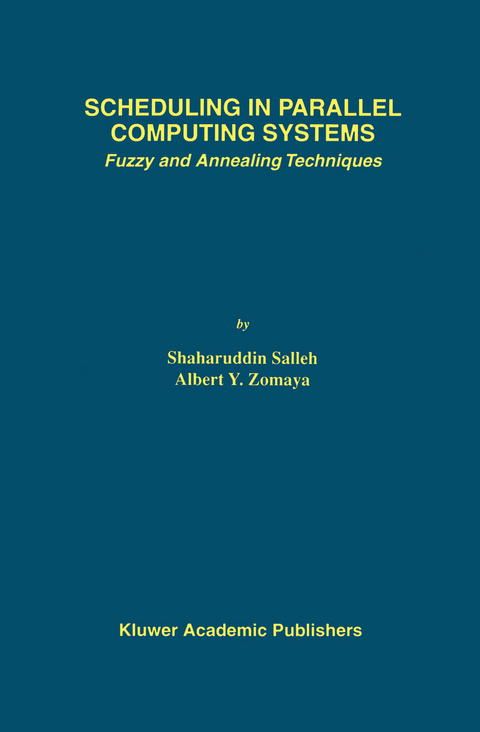
Scheduling in Parallel Computing Systems
Springer (Verlag)
978-0-7923-8533-2 (ISBN)
Scheduling in Parallel Computing Systems: Fuzzy and Annealing Techniques provides results that prove such approaches can become viable alternatives to orthodox solutions to the scheduling problem, which are mostly based on heuristics. Although heuristics are robust and reliable when solving certain instances of the scheduling problem, they do not perform well when one needs to obtain solutions to general forms of the scheduling problem. On the other hand, techniques inspired by natural phenomena have been successfully applied for solving a wide range of combinatorial optimization problems (e.g. traveling salesman, graph partitioning). The success of these methods motivated their use in this book to solve scheduling problems that are known to be formidable combinatorial problems.
Scheduling in Parallel Computing Systems: Fuzzy and Annealing Techniques is an excellent reference and may be used for advanced courses on the topic.
1 Scheduling: Setting the Seen.- 1.1 Introduction.- 1.2 Problem Overview.- 1.3 Definitions.- 1.4 Task Precedence Relationships.- 1.5 NP-Completeness and Scheduling.- 1.6 Scope of this Work.- 2 Parallel Computing: Experimental Platform.- 2.1 Introduction.- 2.2 Parallel Computers.- 2.3 Transputer-Based Systems.- 2.4 Software Tools for the Transputer.- 2.5 Famts.- 2.6 Summary.- 3 Task Scheduling: Highlights and Framework.- 3.1 List Scheduling Heuristics.- 3.2 Heuristic Clustering Algorithms.- 3.3 Graph Theoretic Approaches.- 3.4 Queuing Theory.- 3.5 A Framework for Experiments.- 3.6 Case Study.- 3.7 Parallel Implementation.- 3.8 Summary.- 4 Static Scheduling: Mean-Field Annealing.- 4.1 Neural Networks.- 4.2 An Overview of Mean-Field Annealing.- 4.3 The Graph Partitioning Problem.- 4.4 Minimum Interprocessor Communication.- 4.5 MFA Model for Minimum Interprocessor Communication.- 4.6 Implementation Strategy.- 4.7 Case Study: A Fully-Connected Network.- 4.8 Different Network Topologies.- 4.9 Summary.- 5 Dynamic Scheduling: A Fuzzy Logic Approach.- 5.1 Fuzzy Logic.- 5.2 Dynamic Scheduling.- 5.3 A Fuzzy Model for Dynamic Task Allocation.- 5.4 Fuzzy Dynamic Scheduling.- 5.5 Implementation.- 5.6 Summary.- 6 Single-Row Routing: Another Computationally-Intractable Problem.- 6.1 Introduction.- 6.2 Solving the SRR Problem.- 6.3 Existing Methods.- 6.4 Simulated Annealing.- 6.5 Comparisons.- 6.6 Summary.- 7 Epilogue.- 7.1 Summary of Findings.- 7.2 Open Issues.- Appendix A: Graph Multipartitioning Using Mean-Field Annealing.- Appendix B: General List Heuristic (Gl).- Appendix C: Single Row Routing (TARNG et al. 1984).- Appendix D: Single Row Routing (DU and LIU 1984).- References.
| Reihe/Serie | The Springer International Series in Engineering and Computer Science ; 510 |
|---|---|
| Zusatzinfo | XIII, 170 p. |
| Verlagsort | Dordrecht |
| Sprache | englisch |
| Maße | 155 x 235 mm |
| Themenwelt | Mathematik / Informatik ► Informatik ► Theorie / Studium |
| Mathematik / Informatik ► Mathematik ► Logik / Mengenlehre | |
| ISBN-10 | 0-7923-8533-0 / 0792385330 |
| ISBN-13 | 978-0-7923-8533-2 / 9780792385332 |
| Zustand | Neuware |
| Haben Sie eine Frage zum Produkt? |
aus dem Bereich


